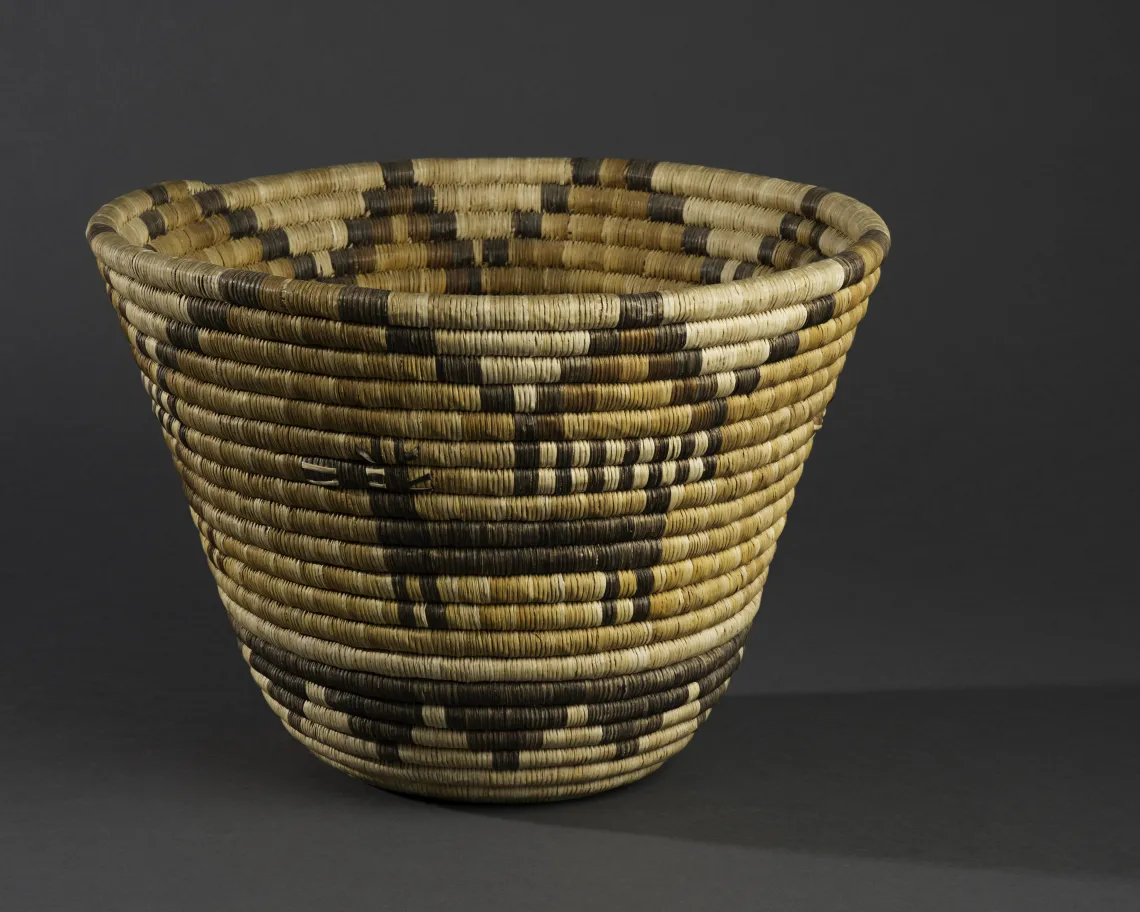
Coiled bowl with antelope and cloud design, yucca and galleta grass, ca. 1945. Donated by Judith and Andrew Finger, 2018
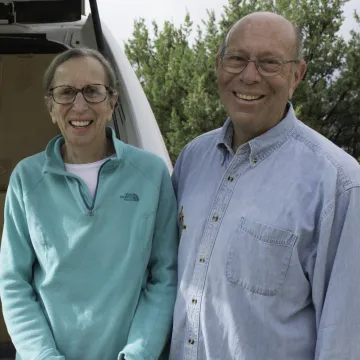
Judith and Andrew Finger, 2018
In early 2018, the Arizona State Museum (ASM) received a significant donation of 208 Hopi baskets from Judith W. and Andrew D. Finger, residents of Dallas, Texas and Santa Fe, New Mexico.
“The Finger collection is as meticulously documented as it was lovingly assembled,” said ASM Director Dr. Patrick D. Lyons. “These baskets are outstanding in terms of their research and teaching value. Each embodies Hopi traditions, stories, iconography, and technology. At ASM they will be preserved and made available for the edification and enjoyment of current and future generations. As a student of Hopi culture myself, I am thrilled by the possibilities for research, exhibits, and public programs.”
The 177 wicker, 29 coiled, and 3 plaited baskets join and enhance ASM’s existing collection—designated an American Treasure and given the moniker “Woven Wonders” in 2006 as the world’s largest, most comprehensive, and best documented assemblage of American Indian basketry.
“Donated personal collections are the foundation of ASM’s more than 4,000 historic and contemporary baskets,” explained Diane Dittemore, curator of ethnological collections. “Added to more than 30,000 examples of ancient basketry and fiber art, ASM’s holdings are unparalleled. The new arrivals, like most of ASM’s collections, are accessible for research, study, and exhibit. The Finger Collection enhances ASM’s ability to illustrate the many facets and beauty of Hopi culture.”
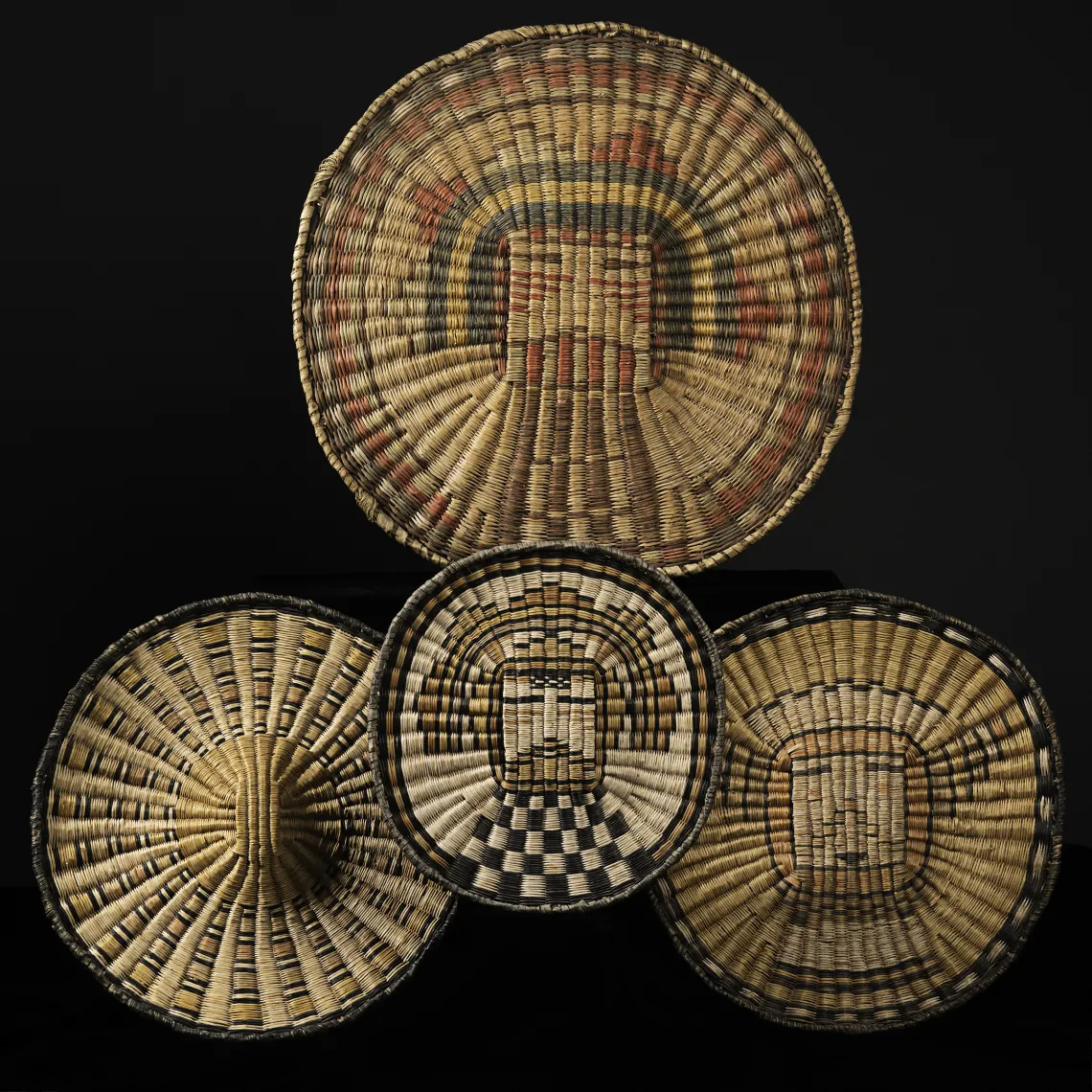
Wicker plaques; rabbitbrush, dune broom, yucca. Top to bottom, Left to right: Sa’lakwtaqa (Shalako man katsina), ca. 1910; Corn cob design, ca. 1935; Sa’lakwtaqa (Shalako man katsina), ca. 1945; Kòoninkatsina (Havasupai katsina), ca. 1930.
The Fingers first began collecting Hopi baskets in 1988 while vacationing in Santa Fe. They lived in Cleveland then. “Our first wicker plaque depicted Taawakatsina, Sun Katsina,” explained Mrs. Finger. “This piece appealed to us on two levels—the use of faces in art forms has always intrigued us, and the sun image brought welcome warmth to our Cleveland winters. It also introduced us to a world of artistic creativity, fashioned by Hopi basket makers. Wherever we traveled and whenever there was an auction or show, we searched for Hopi wicker plaques. Over the years, with the help of John Kania of the Kania Ferrin Gallery, Santa Fe, NM, our collection grew, and we refined its focus, concentrating on plaques with katsina imagery woven roughly a century ago.”
The Fingers curated a traveling exhibit, in cooperation with the Grace Hudson Museum and Sun House in Ukiah, CA, and authored the accompanying book, Circles of Life: Katsina Imagery in Hopi Basketry. ASM hosted the exhibit in 2009.
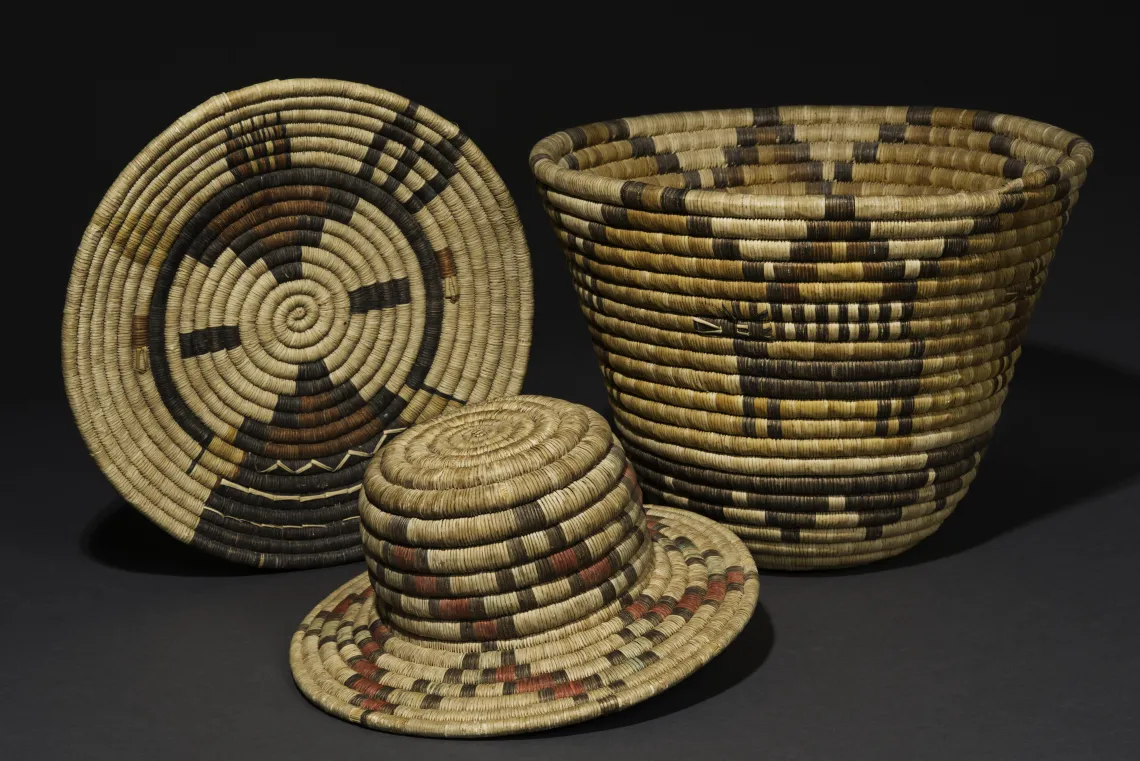
Coiled baskets from Second Mesa; yucca and galleta grass. Left to right: Hiilili katsina plaque, ca. 1975; Novelty hat, ca. 1920; Bowl with antelope and cloud design, ca. 1945. Gifts of Judith and Andrew Finger, 2018
“Hopi baskets can be appreciated on many levels,” said Mr. Finger. “Viewers can admire them as works of art and marvel at the talents of their makers. They can identify a katsina image and recognize the integral part katsinam play in Hopi life. They can understand the importance of basketry in sustaining Hopi traditions. Through this donation we hope that future generations will always have a window into the Hopi people’s rich culture and history.”
Integral to the daily and ceremonial lives of the Hopi, their baskets are among the most appreciated and sought-after art forms of the U.S. Southwest. Third Mesa basket weavers are renowned for their wicker work, while Second Mesa basket weavers specialize in coiling. Both techniques can depict katsinam. Archaeological research tells us that the katsina religion dates back at least to the 14th century. Many aficionados of Native American art are familiar with katsina dolls, the carved representations of Hopi spirit helpers created from cottonwood root. Appreciating katsina iconography provides a glimpse into understanding, to the extent it is possible or appropriate, the complex social constructs, history, and enduring traditions of the Hopi people.
The Fingers previously have donated ceramic vessels to ASM.
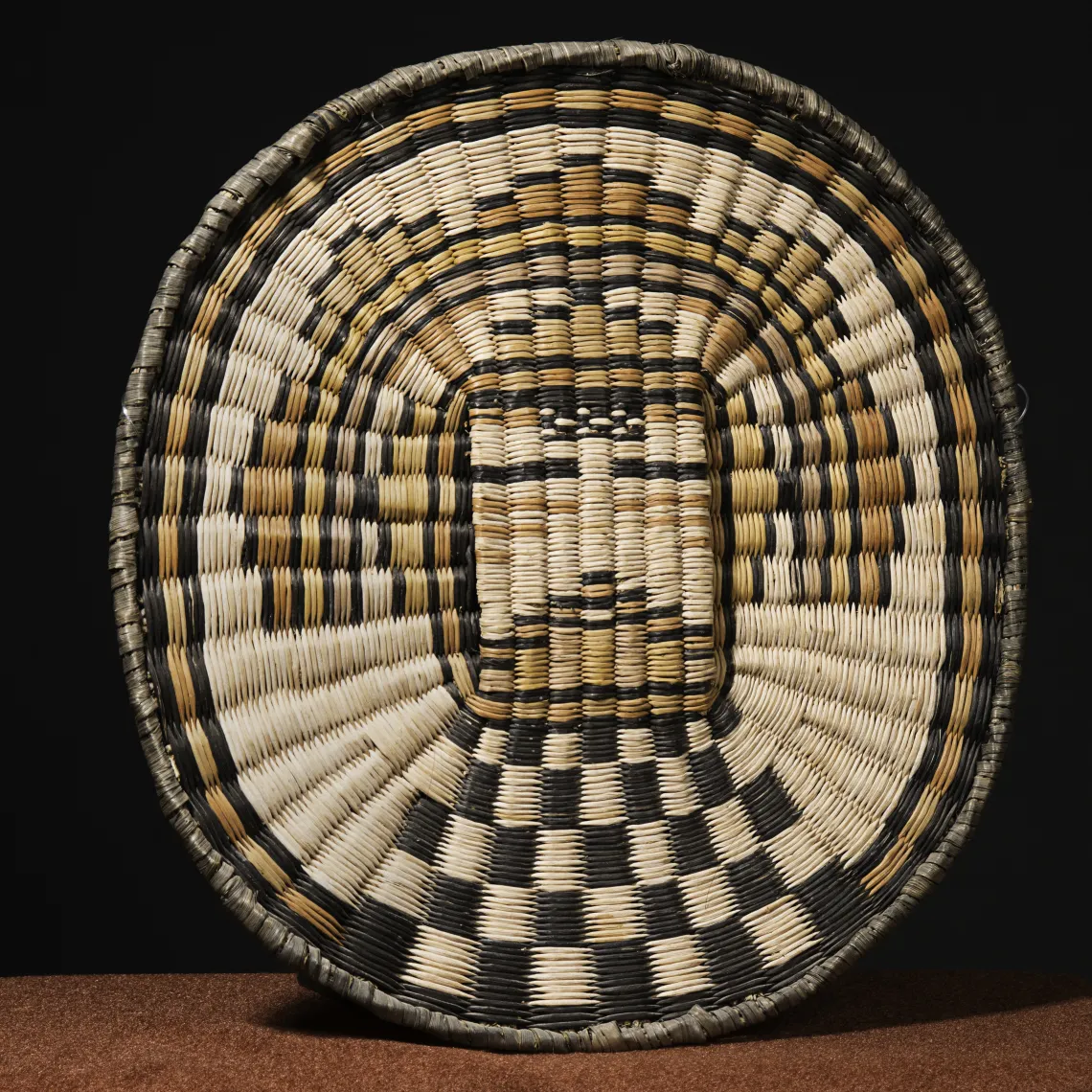
Wicker plaque, Sa’lakwtaqa (Shalako man katsina), rabbitbrush, dune broom, yucca, ca. 1945. Gift of Judith and Andrew Finger, 2018
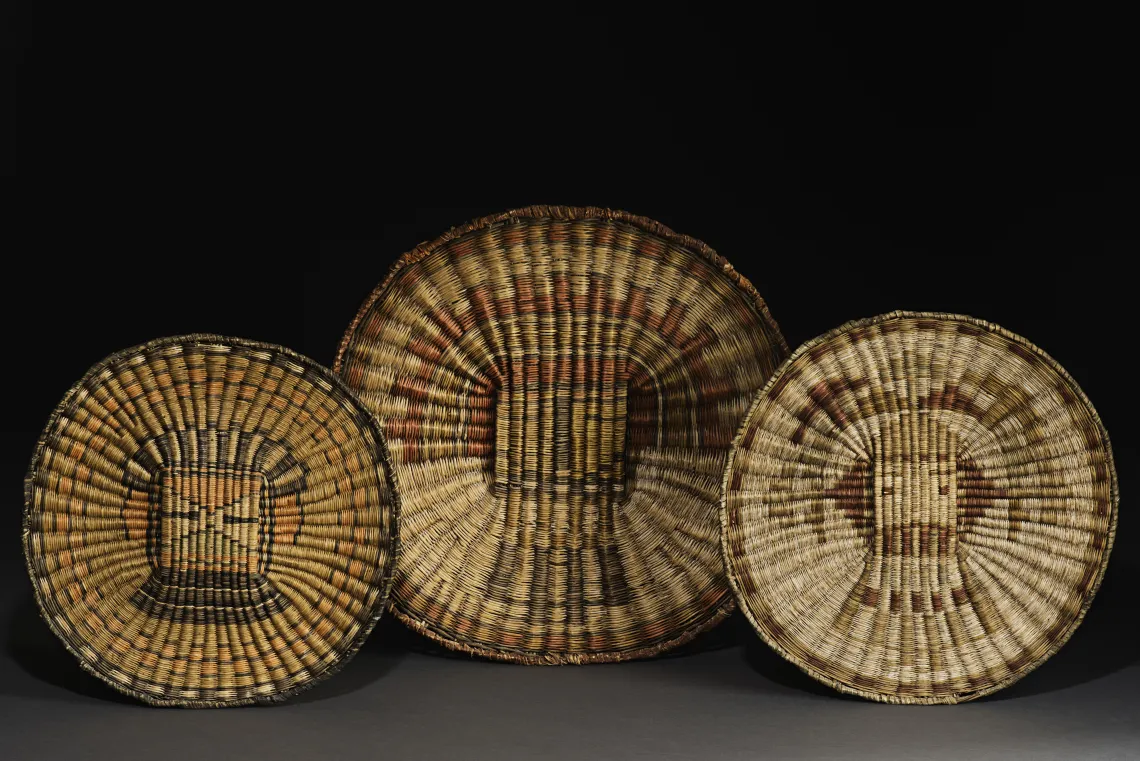
Wicker plaques from Third Mesa; rabbitbrush, dune broom, yucca. Left to right: Hiilili katsina, ca. 1935; Si’ohemiskatsina (Zuni Hemis katsina), ca. 1910; Sa’lakwmana (Shalako maiden katsina), ca. 1905. Gifts of Judith and Andrew Finger, 2018





